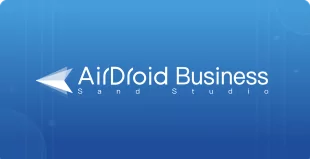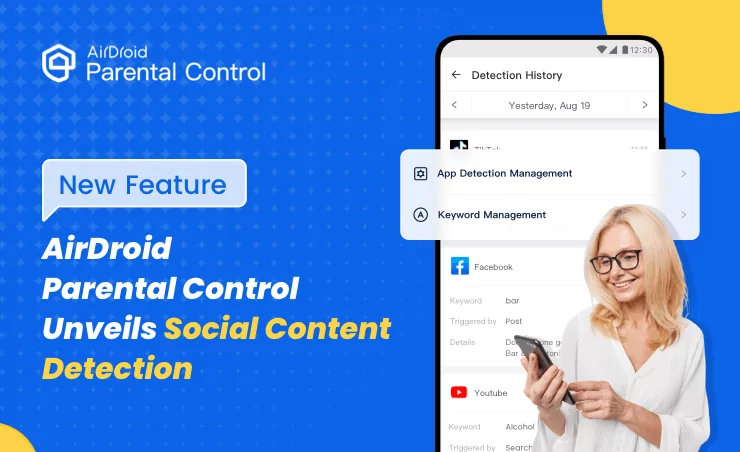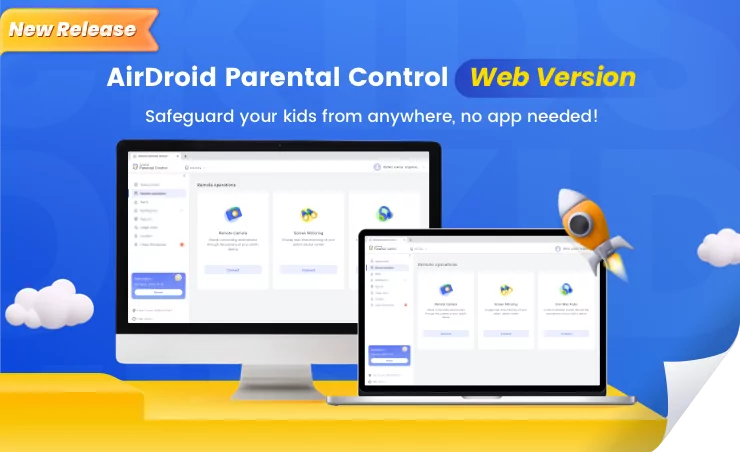What is Modern Device Management and How to Apply it?
The workplace IT eco-system today witnesses unprecedented complexity. From hybrid work environment to the use of BYOD, remote work, IoT, and a varying range of endpoint types being used today at workplaces, crafting a comprehensive IT strategy asks for more robust techniques, giving rise to Modern Device Management (MDM) as a parallel approach to conventional Mobile Device Management (MDM).
The former, however, offers more a wholesome management approach, encompassing more types of endpoints and providing comparatively more granular monitoring options, thus making it more desirable for setups with hybrid, cloud-based setups with the need to focus more on insights about usage trends.

Let’s dive deeper into understanding what Modern Device Management is, how it differs from traditional MDM, the process of transitioning from the former to the later, and how it can benefit your business.
- Part 1 : What is Modern Device Management?
- Part 2 : What are the Different Models Making Up Modern Device Management?
- Part 3 : Why Modern Device Management?
- Part 4 : How to Transition from Traditional to Modern Device Management?
- Part 5 : Integrating AirDroid Business for Modern Device Management
- Part 6 : Future Trends In Modern Device Management
1What is Modern Device Management?
Let us have a better understanding of Modern Device Management (MDM) before we can decide whether or not your enterprise needs it.
1Defining Modern Device Management (MDM)
Modern Device Management in easy definition is a powerful technology that empowers the organization to remotely manage the device associated with it. It also allows configuring and securing the overall device ecosystem. It goes beyond the traditional Mobile Device Management and encompasses a wider range of devices including virtually every type of endpoint and provides more granular control with its focus on each device’s usage patterns.
2What Is a Modern Managed Device?
In simple words, a modern managed device is any electronic device that is enrolled in a Modern Device Management system, allowing access to the IT administrators or staff members to remotely control, secure, and configure it. Here, the scope of devices covered is broader than Mobile Device Management, and devices like desktops, IoT sensors, wearables, and virtual endpoints, etc., are also included as managed devices by Modern Device Management.
Below are just a few examples of modern managed devices.
- Laptops and Desktops: Take the example of Windows 10 and Windows 11 desktops. You can monitor and manage them using various tools like AirDroid Business and Microsoft Intune. For example, you can restrict access remotely and provision these managed devices.
- IoT Devices: Take the examples of sensors and cameras that are used for monitoring. These can be centrally monitored, managed, and configured using Modern Device Management.
- Cloud Based Endpoints: For example, using Windows 365, authorized staff can access virtual Windows desktop using any device. These virtual desktops are being managed through Modern Device Management software like Intune. This eliminates the need for any specialized hardware components and the access is secured by using active directory that restricts unauthorized access.
- Wearables: For instance, smartwatches used in healthcare can be monitored by MDM.
2What are the Different Models Making Up Modern Device Management?
There are multiple models that make up modern device management. In other words, this modern MDM encompasses a number of other management domains to give a holistic approach. Here are a few prominent sub-domains included in Modern Device Management:
| Models of Modern Device Management | Description |
|---|---|
| MAM | Mobile Application Development Mobile application development focuses on managing the applications that use the data of the company and not the rest of the device. |
| MCM | Mobile Content Management This is Mobile Content Management which is used to manage the access and collaboration of content among devices. |
| MIM | Mobile Information Management Mobile Information Management is a kind of management that focuses on controlling the lifecycle of the data and management of the applications that have the ability to transmit it. |
| MDM | Mobile Device Management Mobile Device Management focuses on controlling the devices that are interactive with native MDM API. |
| EMM | Enterprise Mobile Management It mixes the multiple models together and theoretically, it is a combination of MDM and MAM. |
| UEM | Unified Endpoint Management Unified Endpoint Management is an evolved version of EMM, which provides a single console that has the ability to manage multiple ranges of the device. |
MDM (Mobile Device Management) Vs MDM
Although both management approaches share a bit more than their acronyms in common, there are some subtle but important differences. Let us have a look at how both MDMs differ from each other, so you may know which one would do for your enterprise.
| Feature | Mobile Device Management (MDM) | Modern Device Management (MDM) |
|---|---|---|
| Types of Managed Devices | Smartphones, laptops, tablets, and other traditional mobile devices. | Manages multiple device types such as desktops, laptops, smartphones, tablets, wearables, servers, and even IoT devices and virtual endpoints across diverse operating systems. |
| Management Approach | Relies heavily on manual configuration through physical access or agent software installation. It is overall a slower and labor-intensive process. | Utilizes cloud-based platforms for remote configuration, deployment, and monitoring. Offers greater flexibility and scalability. |
| Security | Main focus is on authentication techniques. | Focuses more on user behavior and activity. It has multiple strong password policies, data encryption, application restrictions, and remote wipe capabilities for enhanced data protection among devices. |
| Scalability | Comparatively low scalability with inability to adapt to the changing IT environment and encompass some advanced types of endpoints. | Designed to handle large device deployments efficiently, including the evolving IT assets. |
| Primary Focus | Focuses primarily on monitoring and managing devices. | Focuses on getting insights about the data usage and user’s behavior, for enhancing user experience. |
3Why Modern Device Management?
There are many advantages of Modern Device Management in businesses:
- Better Security: Modern Device Management provides better encryption and strong passwords from laptops to wearables, safeguarding sensitive business data in healthcare, finance, and beyond.
- More Efficient Management: Updating, configuring, and deploying applications for all devices from a single platform, boosting efficiency in education, retail, and manufacturing.
- Improved Compliance: Modern Device Management helps meet industry regulations by enforcing data access controls on devices used for financial transactions (finance) or accessing patient data (healthcare).
- Increased Productivity: Automated updates and app deployment ensure all devices have the latest tools and security fixes, keeping employees productive across different sectors.
- Reduced Costs: Automating tasks and minimizing support tickets frees up IT resources, leading to cost savings in all business environments.
Modern Device Management offers a centralized, secure, and efficient way to manage devices, empowering businesses to focus on their core operations.
4How to Transition from Traditional to Modern Device Management?
So, you’ve decided to transition from traditional Mobile Device Management, giving way to rapidly evolving, robust, and comprehensive Modern Device Management. But you don’t know where to start and how to proceed. To walk you through the exciting new venture, here is a step-by-step guide:
Steps to Transition from Traditional to Modern Device Management
- Step 1: Evaluation
Start by assessing the current device management mechanism at your enterprise. Identify the loopholes and areas that can benefit from Modern Device Management. - Step 2: Devise a Plan
Now is the time to jot down your goals that you want to achieve through modern management. Keep in mind the current IT ecosystem of your workplace as well as the type of endpoints you are planning to incorporate in the future. - Step 3: Tools Selection
Shop around for a better knowledge about what is being offered by various modern management tools and compare them to hunt for the most suitable one. Make sure it offers the essential features like impeccable security, scalability, and automation. - Step 4: Pilot Program
Test the selected modern management tools on a smaller scale and gather feedback. According to the results, make necessary adjustments to align the program to your organizational goals. - Step 5: Launch Comprehensive Training
To get your staff acquainted with the modern management tools, carry out training sessions so that your staff can get the best out of the new tools. Make sure you provide continual support for enhanced user experience and maximum productivity.
Best Practices for Transitioning to Modern Device Management
Here are some of the ideal practices that should be followed for smooth and fruitful transitioning:
- Onboarding Stakeholders: Keep all the stakeholders onboard. Keeping them involved and posted from the beginning ensures smooth transition without any issues and concerns.
- Pooling In Suggestions: Allow the relevant staff to have hands-on experience with the new tools during pilot deployment and pool in feedback and suggestions before you finally make a decision about the suitable tools. This practice helps take stakeholders in confidence while giving admins an idea about how well their staff will get along with the new tools and where they need to train.
- Ongoing Monitoring: For some time, make sure you monitor the new management system closely to have an idea about its performance and the required adjustments.
5Integrating AirDroid Business for Modern Device Management
If you’ve decided to switch to Modern Device Management and are on a hunt for the most suitable tools, we recommend giving a try to AirDroid Business. Here is an overview of what it has in store as a reliable modern management system.
- Quick and Easy Device Enrolment: AirDroid Business offers a range of modern enrolment options including but not limited to email enrolment, remote enrolment by admin, self-enrolment, and more.
- Remote Wipe: Protect your crucial corporate data in case a device gets lost or stolen or is accessed by an unauthorized person by remotely wiping the data from the device.
- Device Tracking: With AirDroid Business, you can easily track a lost or stolen device to keep your data safe.
- Geotracking: AirDroid Business lets you stay in the know of the whereabouts of your devices whether these are macOS or Windows devices, laptops, desktops, or mobile devices. You always know where your devices are.
- Unified Device Management: Manage virtually all types of endpoints with any operating system from a centralized, unified dashboard with enhanced visibility.
- Remote Support and Maintenance: Opt for zero-touch provisioning and support your devices and users remotely, reducing downtime and enhancing efficiency.
- Security and Compliance: Comply with the industry standards of device and data security through the stringent security protocols.
- Intuitive Interface: AirDroid Business offers a simple, intuitive interface for mess-free and yet granular monitoring and management.
6Future Trends In Modern Device Management
As the IT assets used in enterprises keep evolving, so do the techniques to manage them comprehensively. With the rapidly changing IT landscape and an ever-increasing need for seamless management despite diversity, Modern Device Management will keep shaping up in the future. Here are the emerging trends in this domain:
- Internet of Things (IoT): As more and more diverse devices like cameras, sensors, home appliances, and industrial devices are being centrally controlled, modern device management is rapidly evolving to encompass all these varying types of devices.
- Artificial Intelligence: AI has significantly shaped modern device management and continues to do so. With features like predictive analysis based on proactive analysis and performance history, issues can be pinpointed even before they escalate, and hence troubleshooting can be improved, reducing downtime.
- Automation: It is an integral part of modern management tools. It helps save time and cost while enhancing user experience. Tedious, repetitive, and yet crucial tasks of update management, patch deployment, configuration management, etc., can be performed automatically through customized workflows without delays.
- Edge Computing: As edge computing brings data analytics in the vicinity of the data source, processing time is quickened and latency can be avoided. Besides, it helps reduce the bandwidth usage.
- 5G Internet: 5G internet connectivity has helped increase the reliability and speed of network connection. Modern device management tools make use of it for quick and uninterrupted remote monitoring of the growing number of devices.
In short, the future of Modern Device Management can be foreseen as an increasingly adaptive and scalable system, with a wider scope that allows for seamless monitoring and management of the entire IT ecosystem with varied types of endpoints. We can expect that with evolving tools, we will soon witness increasingly self-managed endpoints with enhanced user experience and impeccable security.













Leave a Reply.